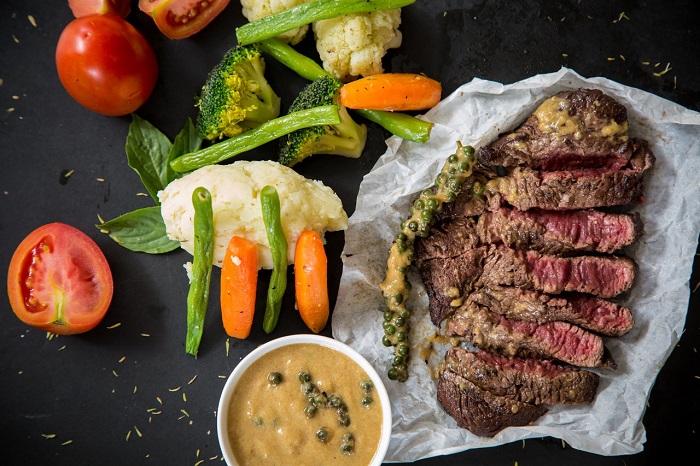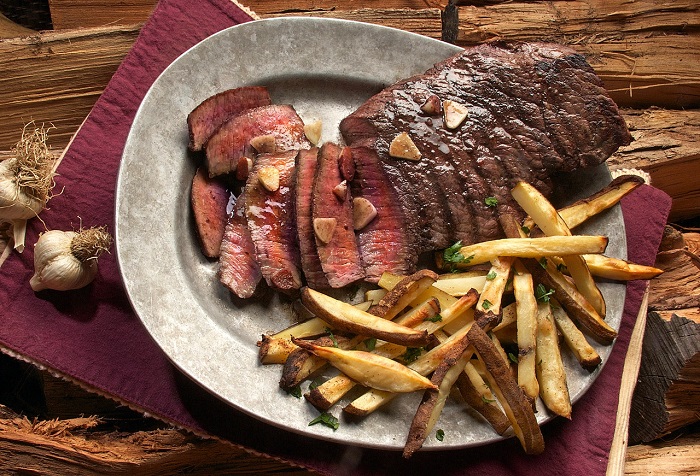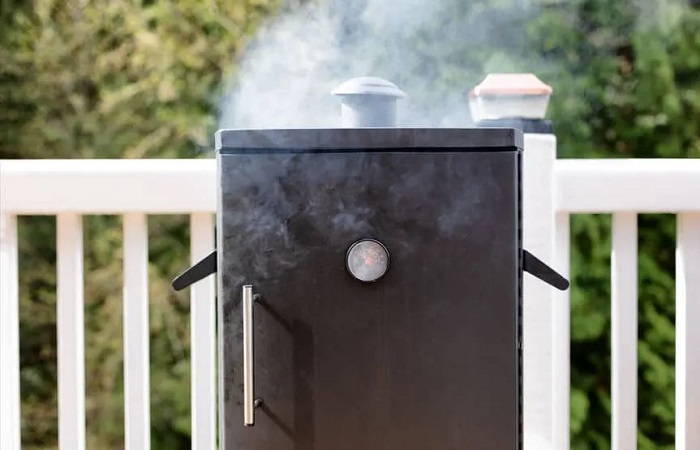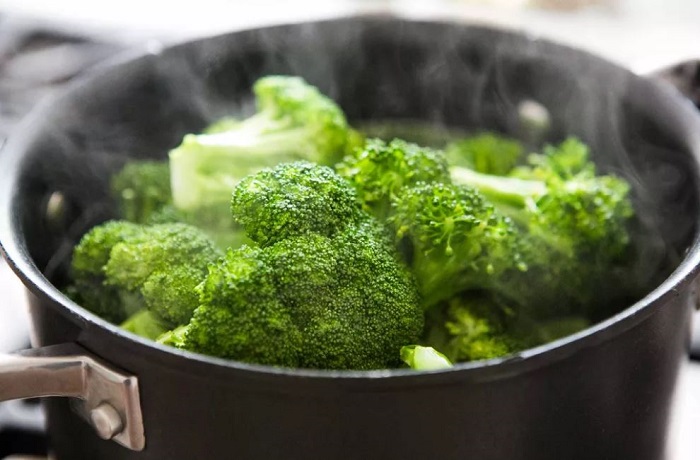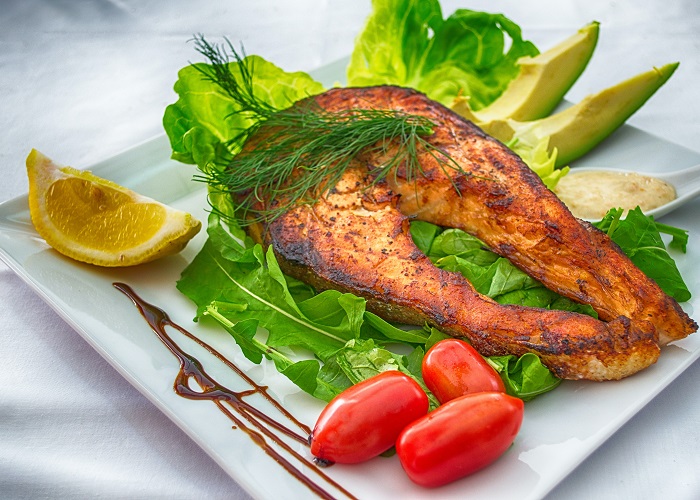What is Best Cooker Temperature? Good Tips in 2023
The temperature of your cooker is one of the most important factors in cooking. Without it, you will never get the desired taste or texture for your meal. Different recipes call for different cooker temperature to achieve that perfect outcome. There are a few cookers on the market that have preset temperatures, but some don’t and this can make it difficult to know what temperature to use with certain dishes.
The best way to figure out which temperature should work best for you is by experimenting with various temperatures until you find the right one! It may take a little more time than using an appliance that has pre-set settings, but who doesn’t like taking their time when they’re cooking?
This blog post will cover everything from What is Best Cooker Temperature? How low each type of food needs to be cooked to how to actually check your cooker’s temperature and some tips and guides on selecting the cooker temperature for foods. If you’d like, you can also print out this blog post, place it in a binder, and refer back to it every time you cook!
What is Suitable Cooker Temperature for Different Kind of Food?
Here we listed the best cooker temperature for all kinds of food (meat, veggies, dessert, etc). It will help you to cook better food with perfect taste and texture.
1. Flatiron Steak (Restaurant Quality):
Flatiron steak is a cut of meat taken from the shoulder of the cow where the blade bone has been removed. This cut of meat is known for being tough and taking a long time to cook. That’s because it is a very lean meat, which means the fat in the meat cooks away quickly.
A well done flatiron steak tastes like a tougher version of roast beef and an undercooked flatiron steak has no flavor but tough fibers that you must chew for minutes before they break down – even with your teeth! The best cooker temperature for flatiron steak is:
- Low: 225 degrees Fahrenheit (107 degrees Celsius).
- Medium Rare: 135-140 degrees Fahrenheit (57 – 60.5 degrees Celsius).
- Medium: 145-150 degrees Fahrenheit (63.3 – 65.6 degrees Celsius).
- Well Done: 165+ degrees Fahrenheit (73.8+ degrees Celsius).
2. Loin Lamb Chops (Restaurant Quality):
Loin lamb chops are a great introductory cut for those who have never cooked lamb before. It has a strip of fat on one side to keep it moist and tender while cooking. The best cooker temperature for loin lamb chops is:
- Medium:145 degrees Fahrenheit (63.3 degrees Celsius).
- Medium Rare: 130-135 degrees Fahrenheit (54.4 – 57 degrees Celsius).
- Well Done: 165+ degrees Fahrenheit (73.8+ degrees Celsius).
3. Roast Chicken Breast (Restaurant Quality):
The skin makes all the difference when you roast chicken breast because it keeps the meat moist and prevents it from drying out. The best way to get crispy skin is by letting the meat rest for a few minutes before carving into it. The chicken will release some of the juices, which you can use to create a gravy or serve directly onto plates as sauce. The best cooker temperature for roast chicken breast is:
- Low – 160 degrees Fahrenheit (71 degrees Celsius).
- Well Done – 165+ degrees Fahrenheit (73.8+ degrees Celsius).
4. Filet Mignon (Restaurant Quality):
Filet mignon is one of the most tender cuts of beef and cooking with low heat will ensure you don’t over-cook it! This cut comes from the small end of the tenderloin that doesn’t receive much exercise so it’s tender. Because it requires a lot of care and attention, filet mignon is best cooked by professionals! The best cooker temperature for filet mignon is:
- Low – 150 degrees Fahrenheit (65.6 degrees Celsius).
- Medium Rare – 130-135 degrees Fahrenheit (54.4 – 57 degrees Celsius).
- Well Done – 165+ degrees Fahrenheit (73.8+ degrees Celsius).
5. Roast Pork Tenderloin (Restaurant Quality):
Pork tenderloin has little fat which means you have to be very careful while cooking it. It’s also very lean which makes it dry out quickly and lose flavor if you over-cook it. So even though the meat itself requires high heat to cook through, it’s best to keep the heat low and cook it slowly. The best cooker temperature for roast pork tenderloin is:
- Low – 160 degrees Fahrenheit (71 degrees Celsius).
- Medium Rare – 135-140 degrees Fahrenheit (57 – 60.5 degrees Celsius).
- Well Done – 165+ degrees Fahrenheit (73.8+ degrees Celsius).
6. “Rare” Steak (Restaurant Quality):
“Rare” steak is actually “blue rare” steak or very, very rare steak. So how do you cook a blue rare steak? First of all, make sure your meat thermometer probe can withstand a high temperatures so you can check the internal temperature without losing juices from inside the meat!
You must be familiar with hot pan effect ! Because this type of meat is so thin, you will need to cook it quickly. The best cooker temperature for “rare” steak is:
- Medium – 145-150 degrees Fahrenheit (63.3 – 65.6 degrees Celsius).
- Cooking time: 2-5 minutes on each side depending on the thickness and size of your “rare” steak.
- Medium Rare – 130-135 degrees Fahrenheit (54.4 – 57 degrees Celsius).
Cooking time: 4-6 minutes on each side depending on the thickness and size of your “rare” steak.
- Well Done – 165+ degrees Fahrenheit (73.8+ degrees Celsius).
Cooking time: 5-7 minutes on each side depending on the thickness and size of your “rare” steak.
- “Medium” Rare – 135-140 degrees Fahrenheit (57 – 60.5 degrees Celsius).
Cooking time: 6-8 minutes on each side depending on the thickness and size of your “rare” steak.
- Well Done – 165+ degrees Fahrenheit (73.8+ degrees Celsius).
Cooking time: 7-9 minutes on each side depending on the thickness and size of your “rare” steak.
7. Beef Brisket (Restaurant Quality):
Beef brisket is one of the toughest cuts to cook, but also one of the most flavorful! Unfortunately cooking it low and slow doesn’t really work because you want beef brisket to be tender and. The best way to achieve this is by cooking it using a dry heat method and searing it on both sides until they are nice and brown, then putting water in the cooker.
The steam will lock in all the juices and soften up the meat so it’s just as good as slow cooked beef brisket! The best cooker temperature for beef brisket is:
- Low – 160 degrees Fahrenheit (71 degrees Celsius).
- Well Done – 165+ degrees Fahrenheit (73.8+ degrees Celsius).
8. Stewing Beef (Restaurant Quality):
If you want to cook your stewing beef low and slow like most stews, be aware that this cut of meat has a lot of connective tissue that requires long cooking periods to break down. You’ll also end up with a very tender and flavorful dish by cooking it for so long! The best cooker temperature for stewing beef is:
- Low – 160 degrees Fahrenheit (71 degrees Celsius).
- Well Done – 165+ degrees Fahrenheit (73.8+ degrees Celsius).
9. Beef Brisket Flat Cut (Restaurant Quality):
Another tough cut of meat that needs to be cooked low and slow! Even though you should definitely sear the brisket flat cut in a cast iron pan before you cook it, don’t try to grill it quickly or brown it on both sides because with this cut of meat, the less done, the better. The best cooker temperature for beef brisket flat cut is:
- Low – 160 degrees Fahrenheit (71 degrees Celsius).
- Well Done – 165+ degrees Fahrenheit (73.8+ degrees Celsius).
10. Beef Tongue (Restaurant Quality):
Beef tongue is a tough cut of meat and it’s one of the most flavorful in my opinion! The best way to cook beef tongue is by braising or cooking it low and slow. The best cooker temperature for beef tongue is:
- Low – 160 degrees Fahrenheit (71 degrees Celsius).
- Well Done – 165+ degrees Fahrenheit (73.8+ degrees Celsius).
11. Chicken Thighs with Bone In & Skin On (Restaurant Quality):
One of my favorite chicken cuts! Cooking them skin side down until they are nice and crispy gives you that restaurant quality look! Plus, leaving the bones in helps lock in all the chicken juices. The best cooker temperature for chicken thighs with bone in & skin on is:
- Medium – 350 degrees Fahrenheit (176.7 degrees Celsius).
- Cooking time: 20-30 minutes depending on how crispy you want your skin to be.
12. Chicken Thighs without Bone In & Skin On (Restaurant Quality):
Just like the ones above, this cut needs to be cooked skin side down until the skin gets nice and crispy. Cooking them with their bones in will lock in all the natural flavors but, if you want, you can remove everything before cooking it. The best cooker temperature for chicken thighs without bone in & skin on is:
- Medium – 350 degrees Fahrenheit (176.7 degrees Celsius).
- Cooking time: 15-20 minutes depending on how crispy you want your skin to be.
13. Chicken Breast (Restaurant Quality):
Pretty self-explanatory here, right? The chicken breast cut needs to be cooked over medium heat until the internal temperature reaches 165 degrees Fahrenheit (73.8 degrees Celsius). The best cooker temperature for chicken breast is:
- Medium – 350 degrees Fahrenheit (176.7 degrees Celsius).
- Cooking time: 15-20 minutes depending on how much chicken breasts you’re cooking.
14. Hamburgers:
Hamburgers cooked by professional cooks need little explanation! You just need to make sure that every side of the patty is touching the hot surface and after about 5 minutes or so, it’s done! Another trick they use to achieve a nice crispy outside is by putting a lid on top of the burger. The best cooker temperature for hamburgers is:
- Medium – 350 degrees Fahrenheit (176.7 degrees Celsius).
- Cooking time: 5-10 minutes depending on how well done you like your burger to be
15. Pork Chops with Bone In & Skin On (Restaurant Quality):
Pork chops need to be cooked over medium heat until the internal temperature reaches 145 degrees Fahrenheit (63.3 degrees Celsius). By cooking them skin side down, you’ll get that delicious crispy skin everyone loves! The best cooker temperature for pork chops is:
- Medium – 350 degrees Fahrenheit (176.7 degrees Celsius).
- Cooking time: 15-25 minutes depending on how thick your pork chops are.
16. Pork Chops without Bone In & Skin On (Restaurant Quality):
Just like the ones above, you need to cook pork chops until the internal temperature reaches 145 degrees Fahrenheit (63.3 degrees Celsius). Pork chops cooked with their bones in will lock in all that natural flavor but, if you want, you can remove everything before cooking them! The best cooker temperature for pork chops without bone and skin on is:
- Medium – 350 degrees Fahrenheit (176.7 degrees Celsius).
- Cooking time: 10-20 minutes depending on how thick your pork chops are.
17. Pork Steak (Restaurant Quality):
Pork steak is one of those cuts of meat that people don’t really use much but should definitely start using more! It’s much more flavorful than some other popular cuts of pork and can be used just like you’d use beef steak! The best temperature to cook pork steak is:
- Medium – 350 degrees Fahrenheit (176.7 degrees Celsius).
- Cooking time: 5-10 minutes depending on how well done you want your pork steaks to be.
18. Eggs:
This one might seem a bit weird, but it’s actually pretty simple! All you need is a big pot or an electric skillet , some water and, of course, eggs. If you want scrambled eggs , just break the egg into a bowl and scramble them with a fork before adding them to the hot water. Egg whites will start to solidify at about 158 degrees Fahrenheit (70 degrees Celsius). You can use a thermometer to measure this if you want.
For sunny side up eggs , the water has to reach about 203 degrees Fahrenheit (95 degrees Celsius). Just like regular scrambled eggs, add the egg whites first and once they solidify a little bit, add in the egg yolks . The best cooker temperature for eggs is: Medium – 350 degrees Fahrenheit (176.7 degrees Celsius).
Cooking time: 5-8 minutes depending on how well done you want your eggs to be.
19. Tuna: If you’re watching your weight or just love tuna , then here’s something that might interest you! Thanks to science, we now have an accurate way of measuring the internal temperature of cooked meat without having to cut it open… Digital cooking thermometer ! The best cooker temperature for tuna is: Medium-High – 450 degrees Fahrenheit (232.2 degrees Celsius).
Cooking time: 2-5 minutes depending on how well done you like your tuna to be.
20. Salmon:
Salmon and tuna are actually pretty similar in terms of how they should be cooked! If you want them rare, then the internal temperature should reach about 115 degrees Fahrenheit (46.1 degrees Celsius). For medium rare, it needs to reach 130 degrees Fahrenheit (54.4 degrees Celsius) and so on… The best temperatures for salmon are:
- Rare – 115 degrees Fahrenheit (46.1 degrees Celsius).
- Medium Rare – 130 degrees Fahrenheit (54.4 degrees Celsius).
- Medium – 140-145 degrees Fahrenheit (60.0-62.8 degrees Celsius).
- Well done – 150+ degrees Fahrenheit (65.6+ degrees Celsius).
The best temperature for salmon is: Medium – 350 degrees Fahrenheit (176.7 degrees Celsius).
Cooking time: 10-20 minutes depending on the thickness of your salmon steaks.
21. Bacon:
Bacon can be pretty tricky to cook properly, but we’ve got a good method for you! We recommend cooking it in the oven so you don’t have to watch over it and avoid flare-ups as much! The best oven temperature for bacon is: Low – 250 degrees Fahrenheit (121.1 degrees Celsius).
Cooking time: 15-25 minutes depending on how crispy you like your bacon. If you’re using bacon slices, they’ll be done in about 8-10 minutes.
22. Sausages & Hot Dogs:
A really easy way to cook sausages and hot dogs is in the microwave ! The best cooker temperature for sausage is: Medium – 350 degrees Fahrenheit (176.7 degrees Celsius).
Cooking time: 5-15 minutes depending on how well done you like your sausage patties!
23: Chips & French Fries:
This one might seem a bit strange, but it’s actually pretty accurate! All you need is some very basic ingredients and tools… Ingredients : 1 or 2 potatoes per person, olive oil , salt , pepper Tools : Your oven (obviously!), baking tray/sheet , aluminum foil . There’s no need for any measuring equipment as you can just eye ball the ingredients. The best oven temperature for French Fries is:
Medium – 375 degrees Fahrenheit (191.1 degrees Celsius).
Cooking time: 25-30 minutes depending on how crispy you like your fries. If using frozen fries, they should be done in about 20 minutes!
The best temperature for chips is: High – 425+ degrees Fahrenheit (218+ degrees Celsius).
Cooking time: 10-20 minutes or until golden brown (again, depending on how crispy you like them!) Tools : You will need a deep fat fryer or an electric frying pan / wok for this one! Just add the oil to heat up and carefully add your potatoes when it’s hot enough. The best deep fat fryer temperature for chips is: Medium – 355 degrees Fahrenheit (179.4 degrees Celsius).
Cooking time: 5-15 minutes depending on how crispy you like your chips!
To make sure the French Fries and chips come out as good as they can, make sure to thoroughly wash your potatoes or take the skin off before cooking them. If you want to spice up things a bit, then simply add some spices when adding the salt and pepper for extra taste! We hope this article answers all of your questions about how to cook these delicious dishes properly and that you enjoy it!
Above information is the answer for What is Best Cooker Temperature? Now. Let’s move to some tips and guides on selecting best cooker temperature as below.
Tips and Guides on Selecting Best Cooker Temperature
1. How to select Best Cooker Temperature for Different Food Types?
Cooking skillet :
Best Cooker Temperature for Cooking Sisig – It is best to cook sisig in a pan. To know the right temperature that will be perfect for cooking this dish, keep the stove on high heat and set it to 400 degrees Fahrenheit (204.4 Celsius). This is just enough heat to give the skin of the pig some charred crispiness without overcooking its flesh.
The inside parts should then become tender because of the steam that seeps out from within.
Chicken Recipes:
Some people like their chicken well done; while others prefer it juicy and still pinkish or almost raw in certain areas of its most innermost flesh portions. Here are some best cooker temperature guide for cooking different type of chicken recipe.
How to Cook Chicken Breast?
Cooking chicken breast can be tricky if you don’t know the right temperature and cooking time. Once cooked, the meat should appear white all throughout instead of pink or tan. It should also not feel slimy or sticky at all and should separate easily with a fork .
Best Oven Temperature for Roasting a Whole Chicken:
When roasting a whole chicken, you need to cook it in an oven set at 350 degrees Fahrenheit (176.7 Celsius). The skin must turn a golden brown while the insides become thoroughly cooked but not dried out. If you prefer moist breasts, make sure that they reach an internal temperature of 165 degrees Fahrenheit (73. Celsius) .
When making roast chicken, place the bird on a rack inside the oven, breast side up. The temperature of the oven should be 350 degrees Fahrenheit (176.7 Celsius).
How to Cook Chicken Wings?
Place your chicken wings in a large bowl or container and cover them with salt and water (ratio of 1 tsp. salt for every cup of water). Make sure that you wash off the salt thoroughly before placing them on the stove because otherwise, it will get into your dish and make it too salty!
Best Deep Fat Frying Pan Temperature for Fried Chicken
For best results when cooking fried chicken , use enough oil to come halfway up the skillet while maintaining at least 2 inches between the oil’s surface and pan’s top . This should also be done with a deep frying pan or electric wok to create a more uniform temperature.
What is the right Temperature for Deep Frying?
The rule of thumb when buying oil for deep fat frying purposes is that it should not be so hot as to smoke while being heated up but at the same time, not too cold such that no bubbles will form in its surface once you put your food in.
The ideal temperature for deep fat frying most foods (meat, vegetables and pastries included) is about 350 degrees Fahrenheit (176.2 Celsius).
Deep Fat Fryer Temperature Chart – If you do not have much experience with deep fryers, then it might be best to use one that has preset temperatures at around 350 or 375 degrees Fahrenheit (176.2 to 190 Celsius).
Best Deep Fryer Temperature for Fish:
When deep frying fish, it is best if the oil’s temperature is 350 degrees Fahrenheit (176.2 Celsius) so that you get a crispy skin without overcooking its insides which become dry and rubbery when cooked at lower temperatures such as those used for fried chicken.
How to Cook Prawns?
Make sure that the oil reaches about 355 degrees Fahrenheit (183 Celsius) before placing the raw prawns in it so that they cook evenly on all sides while keeping their flesh moist and juicy inside . The ideal oil to use should be neutral or slightly sweet with little flavor of its own .
Deep Fat Fryer cooker Temperature for Vegetables:
When cooking vegetables in a deep fryer , it is best if the oil’s temperature is at 300 degrees Fahrenheit (148 Celsius).
The Best Oil to use for Deep Fat Frying?
Good fats such as coconut oil, lard and peanut oil are great choices when used for deep fat frying. The reason why they are preferred over their other counterparts is because of their high smoke points which can reach up to 400 degrees Fahrenheit (204 Celsius). This makes them less likely to break down and form free radicals and carcinogens during the heating process.
Best Oven cooker Temperature for Baking:
To bake cakes and other desserts, you will need an oven set at 350 degrees Fahrenheit (176.7 Celsius).
Best Cake Pan Size for Layer Cake?
For a layer cake, it is best to use pans with medium depths (2 inches) that are around 9 to 10 inches in diameter . This will ensure that your cake layers rise properly instead of deflating while baking making them even and moist upon cooling.
Best Cookie Sheet Type?
The three most recommended types of cookie sheets are aluminum sheets , steel baking trays and cookie stones .
Best Cookie Sheet Temperature?
Before putting your cookies to bake, make sure that the oven has been heated up at 350 degrees Fahrenheit (176.7 Celsius) first as this will ensure even browning of their surfaces.
How to Prevent Cookies from Burning?
When baking cookies, it is best if you keep rotating the pans in the oven halfway through so that they brown evenly from all sides and do not burn on one side while remaining undercooked on others.
What are the Best Cake Pans?
The round pans with flat bottoms and sharp edges like those made of stainless steel or metal are best for cake making purposes . If you do not have these types of pans available, then choose ones made of ceramic that have flat and straight sides.
Best Cake Pans Size?
Using the right types of cake pans is also essential in baking cakes that rise properly with smooth surfaces, meaning it is best to use pans that are around 2 inches deep . These will allow for a better yield after baking as shallow cake pans result in thinner layers than those made using deeper ones.
How do you Prevent Cake from Burning?
To prevent your cake from burning on the surface, cover its top loosely with aluminum foil after about 15 minutes of baking. This method works best if you bake at a constant temperature of 350 degrees Fahrenheit (176.7 Celsius).
Common question related with Best Cooker Temperature FAQs.
1. How to Know the Temperature of Steak?
Answer: The best way to check if your steak is properly cooked is by touch. A rare steak will have a soft, fleshy texture while medium done steaks will provide a bit of resistance when pressed. Well done steaks offer minimal resistance and are completely firm in texture.
2. How do you Cook Meat Thermometer?
Answer: You can cook meat using a traditional meat thermometer that has a metal stick like probe attached to one end. Insert this into the center of the thickest part of the cut, ensuring it does not touch any bones or fat deposits to get an accurate reading .
3. What does ‘Resting Time’ mean for Meat Cooking?
Answer: The term “resting time” refers to the amount of time meat takes after being removed from heat to let its juices redistribute within the flesh. This is crucial when it comes to juiciness upon serving as overcooking can cause moisture loss and a dry texture.
4. How do you Know When Sausages are Cooked?
Answer: The best way to tell if sausages are ready for consumption is by cutting them open and checking their level of doneness. Raw, pink sausages will have soft casings that contain translucent juices while browned, crispy ones mean they are fully cooked.
5. What does ‘Resting Time’ mean in Food Preparation?
Answer: The term “resting time” refers to the period during which food takes off heat before serving. It is crucial when it comes to quantities of juices upon serving as overcooking can cause moisture loss and a dry texture.
6. How do you Cook Bacon?
Answer: You can cook bacon by frying slices of it in a pan using an open flame or oven broiling . If your recipe calls for melting the bacon, then make sure to use low heat after its fat has been rendered until their surfaces turn crispy brown . For even cooking, always place the pieces with uniform sides down first.
7. How do you Know When Olives are Cooked?
Answer: The best way to tell if olives are ready for consumption is by cutting them open and checking their level of doneness . Raw, purple and firm olives will have a bitter taste while browned, crispy ones mean they are fully cooked.
8. What does ‘Resting Time’ Mean in Food Preparation?
Answer: The term “resting time” refers to the period during which food takes off heat before serving. It is crucial when it comes to quantities of juices upon serving as overcooking can cause moisture loss and a dry texture.
9. How do You Know When Steak is Done?
Answer: The best way to check if your steak is cooked is by touch. A rare steak will have a soft, fleshy texture while medium done steaks provide a bit of resistance when pressed. Well done steaks offer minimal resistance and are completely firm in texture.
10. How do You Cook Steak?
The best way to cook steak is by using direct heat on a hot pan at around 400 degrees Fahrenheit (204.4 Celsius) . This method works well for thin pieces of meat that you want to brown on the outside but retain tenderness within. If your recipe calls for cooking with liquid then use oil, broth or butter instead of water as they can reach much higher temperatures before boiling.
Conclusion
Different cooking methods require different cooker temperature and it is up to you to establish which temperature works best for the food that you are cooking. Experimenting with your oven and making small adjustments from time to time will go a long way in helping you achieve perfect results every meal. After reading this article, you will know what the best cooker temperature is for different types of food.
The right oven/stove setting can make or break a dish and that’s why it’s important to understand how your cooking methods affect the quality of your meal. With these tips in mind, get ready to become an expert chef! You’ll be able to cook anything with ease now that you’ve mastered what the perfect stove settings are for each type of food.
If you have anymore question, just contact us or give comment below, we will answer soon. Thank you for reading!

